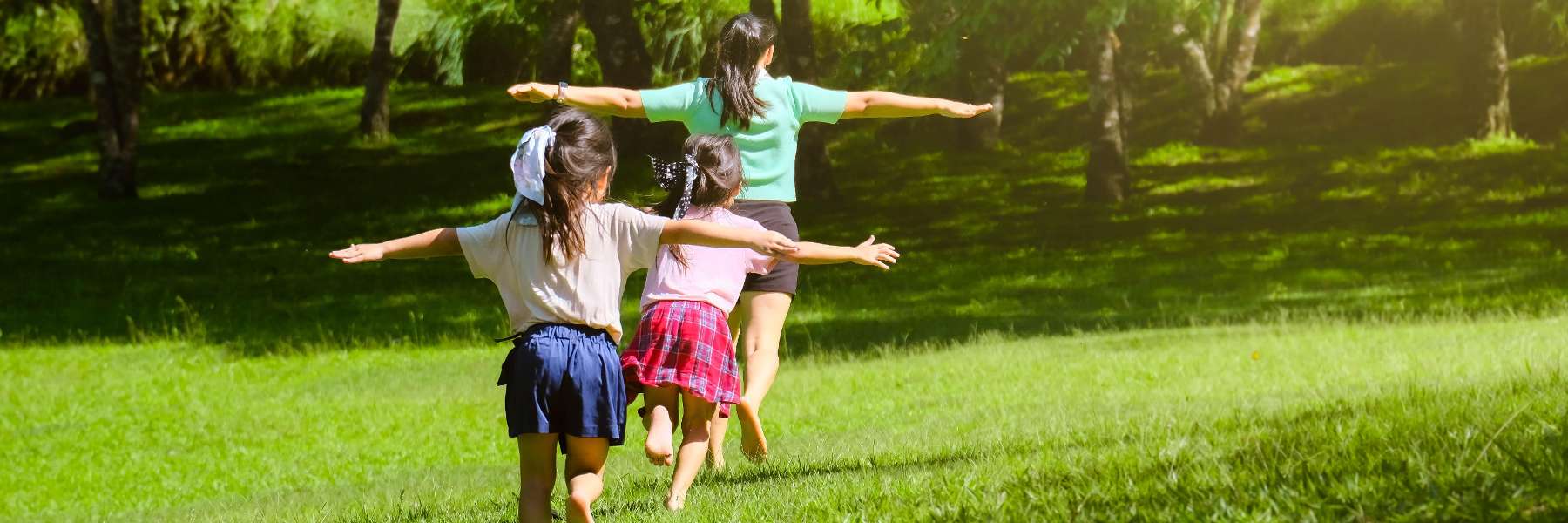
So, what is Myopia?
Myopia (short or near-sightedness) is a very common eye condition and is predicted to affect 55% of Aussies by 2050. Myopia occurs when either the eyeball is longer than it should be or the front part of the eye, the cornea, is too curved. This affects the eyes' ability to see clearly and causes blurry vision in the distance. Myopia will often present in childhood but can present at any age. It is almost always a progressive condition, especially when detected in young children when their eyes are still growing. As the condition progresses, the eyes grow longer, and a stronger prescription is needed more frequently to maintain clear distance vision.
Although there is no cure for myopia, there are ways to help control how rapidly it may develop or progress. Without intervention, eyes can be affected significantly, with lifetime risks of developing several other serious eye conditions - so we need to diagnose this early.
What child behaviours should I be looking for?
The first symptom to be aware of is if your child shows difficulty seeing distant objects or street signs clearly, even if they can see well up close, for tasks like reading or computer use. If your child is myopic, they may avoid distant-related activities, like sport or find ways to make it easier to see in the distance such as sitting closer to the TV, sitting at the front of the classroom to see the board, or simply copying from a friend's notes rather than from the board. These clever ways children compensate for their blurry vision can make it difficult for parents to detect that something is wrong and delay problems being picked up.
As vision difficulties are often more obvious in the classroom setting, should you have any concerns, it's wise to also reach out to your child's teacher to ask:
child's teacher to ask:
- Does my child always sit close to the front of the class?
- To see further away, have you noticed my child squinting?
- Has their schoolwork / performance been declining?
- Are they avoiding participation in playground activities during breaks?
How could I promote a healthy eye environment at home?
There are certain healthy habits you can proactively put into place that may have a preventative effect on the development of Myopia.
- Prioritise more green time and less screen time – get the kids outdoors. Research has shown that balancing screen time or near work with outdoor activities is crucial for eye health. It's recommended that children spend at least 2 hours in daylight enjoying outdoor activities and play.
- Be sure to schedule regular breaks from devices/near tasks – every 20 minutes remind your child to take a break, stop for 20 seconds, and look at something at least 20 feet (or 6m) away.
- Good nutrition also plays a crucial role in maintaining eye health. Look, we know it can be a battle, but trying to encourage your kids to consume those recommended daily servings of veggies is a great start. Slip foods like broccoli, oranges, mangos, spinach, carrots, kiwi fruit, berries, nuts, seeds, and oil-rich fish, like salmon or tuna into their diet. These foods help provide nutrients like lutein, zinc, vitamin A, C and E, along with omega-3 fatty acids, all essential in promoting healthy eyes.
Make a date to come see us.
The best defense for preventing myopia is early detection, so scheduling your children in for regular comprehensive eye exams where we assess their vision and track their eye health is crucial. It is recommended children have full eye examinations before starting school and then regularly as they progress through primary and secondary school. If it's time to bring your children in for a visit, then book your appointment now at either Burleigh Waters or Tweed.
During these appointments, we will update you on the latest strategies for providing clear vision and slowing myopia progression. With continual research being done in this area and current technology innovations, we find ourselves with an arsenal of management options to tailor a solution that works for your child's lifestyle and visual needs.
By working together with our Envision team, you have the opportunity to put some simple measures in place to hopefully help reduce the occurrence and progression of myopia in your child – so, steer the kids towards more outdoor time, keep loading their plates with healthy eating options and have their eyes examined regularly.
